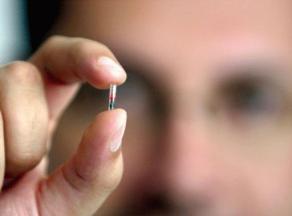If you can view all this evidence and still remain in denial… you have been drinking the “Koolaid” far too long!!
All these many years that truthers have been warning of the dangers of the automated system and the tracking and surveillance it provides, the elite have been vehemently denying everything and claiming that these were simply conspiracy theorist’s stories made up to scare you. Truthers have been warning of the coming of the Mark of the BEAST, and even though it is clearly prophesied in the Bible, NO ONE WANTS TO HEAR IT.
WELL FOLKS… IT IS HERE!!
There is no way to stop it at this point. Everything is in place and now the elite are not even worried about keeping it a secret. It is all out in the open for anyone with eyes to see and ears to listen.
THE ONLY THING THAT YOU CAN DO NOW, IS REFUSE IT! DO NOT FEAR!! STAND YOUR GROUND.
26 Fear them not therefore: for there is nothing covered, that shall not be revealed; and hid, that shall not be known.
27 What I tell you in darkness, that speak ye in light: and what ye hear in the ear, that preach ye upon the housetops.
28 And fear not them which kill the body, but are not able to kill the soul: but rather fear him which is able to destroy both soul and body in hell.
29 Are not two sparrows sold for a farthing? and one of them shall not fall on the ground without your Father.
30 But the very hairs of your head are all numbered.
31 Fear ye not therefore, ye are of more value than many sparrows.
32 Whosoever shall confess me before men, him will I confess also before my Father which is in heaven.
33 But whosoever shall deny me before men, him will I also deny before my Father which is in heaven.
34 Think not that I am come to send peace on earth: I came not to send peace, but a sword.
If you stand on FAITH and TRUST in GOD, He will be with you. FEAR NOT MAN nor DEMON nor Satan himself!
spacer
spacer
The microchip implants that let you pay with your hand
-
Published

Patrick Paumen causes a stir whenever he pays for something in a shop or restaurant.
This is because the 37-year-old doesn’t need to use a bank card or his mobile phone to pay. Instead, he simply places his left hand near the contactless card reader, and the payment goes through.
“The reactions I get from cashiers are priceless!” says Mr Paumen, a security guard from the Netherlands.
He is able to pay using his hand because back in 2019 he had a contactless payment microchip injected under his skin.
“The procedure hurts as much as when someone pinches your skin,” says Mr Paumen.
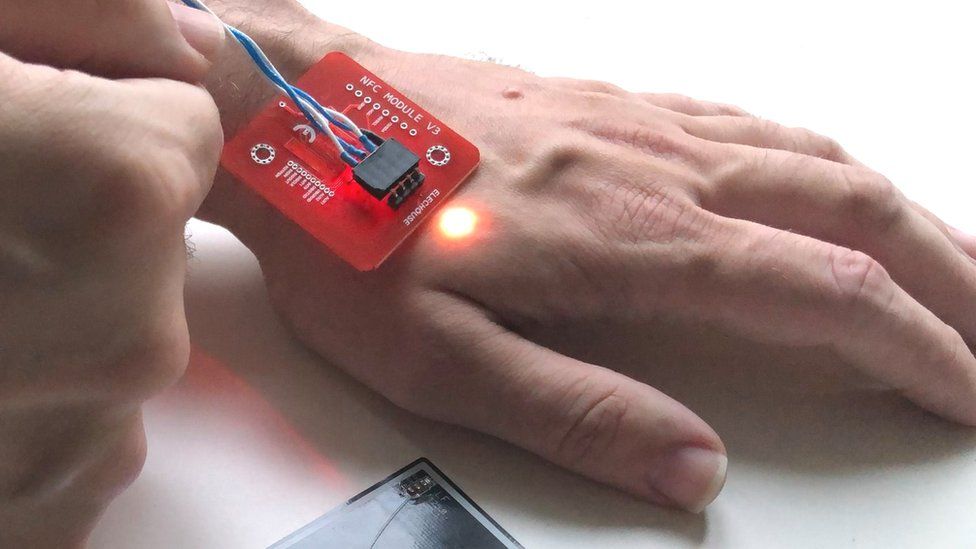
A microchip was first implanted into a human back in 1998, but it is only during the past decade that the technology has been available commercially.
And when it comes to implantable payment chips, British-Polish firm, Walletmor, says that last year it became the first company to offer them for sale.
“The implant can be used to pay for a drink on the beach in Rio, a coffee in New York, a haircut in Paris – or at your local grocery store,” says founder and chief executive Wojtek Paprota. “It can be used wherever contactless payments are accepted.”
Walletmor’s chip, which weighs less than a gram and is little bigger than a grain of rice, is comprised of a tiny microchip and an antenna encased in a biopolymer – a naturally sourced material, similar to plastic.
Mr Paprota adds that it is entirely safe, has regulatory approval, works immediately after being implanted, and will stay firmly in place. It also does not require a battery, or other power source. The firm says it has now sold more than 500 of the chips.
The technology Walletmor uses is near-field communication or NFC, the contactless payment system in smartphones. Other payment implants are based on radio-frequency identification (RFID), which is the similar technology typically found in physical contactless debit and credit cards.
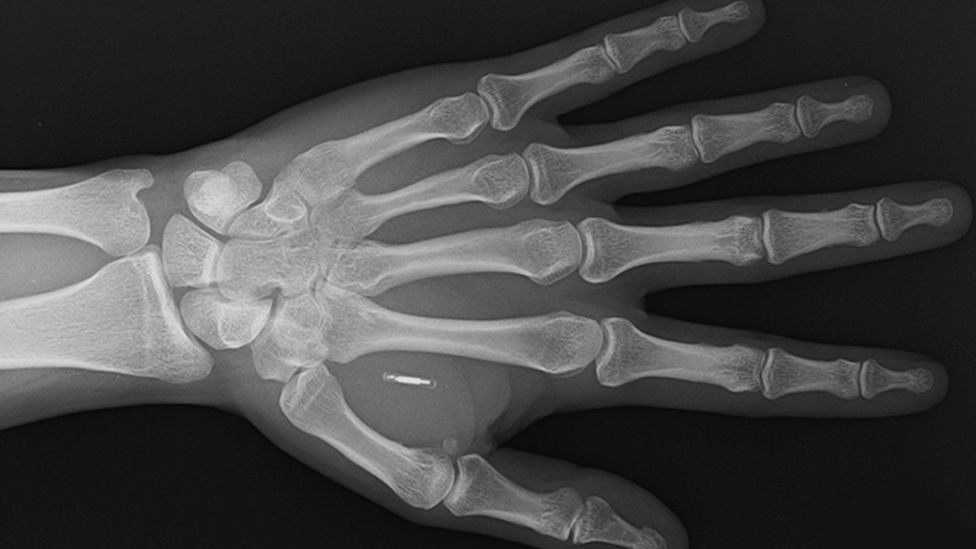
For many of us, the idea of having such a chip implanted in our body is an appalling one, but a 2021 survey of more than 4,000 people across the UK and the European Union found that 51% would consider it.
However, without giving a percentage figure, the report added that “invasiveness and security issues remained a major concern” for respondents.
Mr Paumen says he doesn’t have any of these worries.
“Chip implants contain the same kind of technology that people use on a daily basis,” he says, “From key fobs to unlock doors, public transit cards like the London Oyster card, or bank cards with contactless payment function.
“The reading distance is limited by the small antenna coil inside the implant. The implant needs to be within the electromagnetic field of a compatible RFID [or NFC] reader. Only when there is a magnetic coupling between the reader and the transponder can the implant can be read.” (If that is true, it is only a temporary issue. Once they have their technology in our body we will be locked into their INTERNET OF EVERYTHING and AI will be able to access ALL information in our body, instantaneously from anywhere.)
He adds that he is not concerned that his whereabouts could be tracked.
“RFID chips are used in pets to identify them when they’re lost,” he says. “But it’s not possible to locate them using an RFID chip implant – the missing pet needs to be found physically. Then the entire body gets scanned until the RFID chip implant is found and read.”
Yet the issue with such chips, (and what causes concern), is whether in the future they become ever more advanced, and packed full of a person’s private data. And, in turn, whether this information is secure, and if a person could indeed be tracked.
Financial technology or fintech, expert Theodora Lau, is co-author of the book Beyond Good: How Technology Is Leading A Business Driven Revolution.
She says that implanted payment chips are just “an extension of the internet of things“. By that she means another new way of connecting and exchanging data.

Yet, while she says that many people are open to the idea – as it would make paying for things quicker and easier – the benefit must be weighed up with the risks. Especially as and when embedded chips carry more of our personal information.
“How much are we willing to pay, for the sake of convenience?” she says. “Where do we draw the line when it comes to privacy and security? Who will be protecting the critical infrastructure, and the humans that are part of it?”


New Tech Economy is a series exploring how technological innovation is set to shape the new emerging economic landscape.

Nada Kakabadse, professor of policy, governance and ethics at Reading University’s Henley Business School, is also cautious about the future of more advanced embedded chips.
“There is a dark side to the technology that has a potential for abuse,” she says. “To those with no love of individual freedom, it opens up seductive new vistas for control, manipulation and oppression.
“And who owns the data? Who has access to the data? And, is it ethical to chip people like we do pets?”
The result, she cautions, could be “the disempowerment of many for the benefits of a few”.
Steven Northam, senior lecturer in innovation and entrepreneurship at the University of Winchester, says that the concerns are unwarranted. In addition to his academic work he is the founder of UK firm BioTeq, which has been making implanted, contactless chips since 2017.
Its implants are aimed at people with disabilities who can use the chips to automatically open doors.
“We have daily enquiries,” he says, “And have carried out over 500 implants in the UK – but Covid caused some reduction in this.”
“This technology has been used in animals for years,” he argues. “They are very small, inert objects. There are no risks.”

Back in the Netherlands, Mr Paumen describes himself as a “biohacker” – someone who puts pieces of technology into his body to try to improve his performance. He has 32 implants in total, including chips to open doors and imbedded magnets.
“Technology keeps evolving, so I keep collecting more,” he says. “My implants augment my body. I wouldn’t want to live without them,” he says.
“There will always be people who don’t want to modify their body. We should respect that – and they should respect us as biohackers.”
spacer
spacer
Written by: PNW Staff
Article source: www.prophecynewswatch.com
First, it was former UK Prime Minister Gordon Brown who called on world leaders to form a “temporary” global government in response to the coronavirus pandemic.
Then it was the United Nations Secretary-General asking nations to contribute at least ten percent of their annual income, essentially a global tax.
Now we have Bill Gates and other influential leaders suggesting another global solution – Global Digital ID as part of a vaccination program.
Bill Gates has emerged as a global “authority” in the wake of COVID-19, funding vaccines and advising governments on how to respond to the pandemic.
Gates was busily working to establish global digital ID infrastructure long before the outbreak, which is now being promoted as a way to combat the virus.
ID2020–a project initiated by Bill Gates Foundation, the Rockefeller Foundation, transnational pharmaceutical corporations, and technology firms–is pushing the concept that every human on the planet needs biometric verification because “to prove who you are is a fundamental and universal human right,” according to the ID2020 website.
Gates is not the only one in favor of such systems. Director of the National Institute of Allergy and Infectious Diseases, Dr. Anthony Fauci who appears with Trump at the daily news briefings recently confirmed in an interview with CNN that the idea of Americans carrying “certificates of immunity” is a possibility being considered to identify people who have been infected with the COVID-19 virus and help jump-start America’s economy in the coming weeks.
The certificate of immunity is the pathway that Gates sees for introducing his Global Digial Id certification. Last month Gates was asked about such a certificate on a Reddit forum and said the following:
“Obviously, some kind of recording and tracking mechanism that relies on technology to alert — in context of discussing coronavirus — “who has recovered,” versus who has “been tested,” versus who has been administered a vaccine, “when we have one.”
The similar thinking of Fauci and Gates should not come as a surprise. Both are well connected with one another. Fauci serves as a member of the Leadership Council for the Global Vaccine Action Plan.
This organization was established in part by the Bill & Melinda Gates Foundation, the World Health Organization and Fauci’s own NIAID — a plan that calls for a “Decade of Vaccines” to spread far and wide, all around the globe.
Bill Gates, one of the wealthiest men in the world, is already leading the charge to fund the construction of several factories that will be looking for a vaccine for this new virus and has suggested “larger public gatherings may not resume until broad vaccination has taken place.”
“As countries begin to lift coronavirus lockdowns, biometric identification can help verify those who have already had the infection, and ensure that the vulnerable get the vaccine when it is launched, health and technology experts said,” reports Reuters.
A biometric ID system can keep a record of the infected and those getting the vaccine, said Larry Dohrs, Southeast Asia head at iRespond, a Seattle-based nonprofit that launched its technology last month.
Under the “digital inclusion” initiative, Bill Gates has already been pushing for India’s Aadhaar digital ID system to expand around the world prior to the outbreak. The World Bank is heavily invested in the project.
The GSMA – the industry organization for global mobile operators – recently published a report detailing the push for digital ID systems worldwide to respond to COVID-19. As reported:
State governments in India are adapting real-time digital identification mechanisms to monitor compliance with quarantines arising from the COVID-19 pandemic…
Meanwhile, the Jamaican government is looking to fast track the rollout of its National Identification System to help it dispense aid in response to the COVID-19 outbreak…
GSMA technologies are supported by the Bill and Melinda Gates Foundation. As reported last year, the biometrics company Idemia joined the project:
Idemia has joined the newly launched GSMA Inclusive Tech Lab to support the development of innovations and future technologies that boost digital and financial inclusion…
The GSMA Inclusive Tech Lab intends to promote access to financial, healthcare, mobility, and other services by supporting initiatives around open APIs, artificial intelligence, and digital identity… The GSMA Inclusive Tech Lab is supported by the Bill & Melinda Gates Foundation.
Idemia is a central company involved in supplying the infrastructure needs of most digital and biometric ID systems around the world.
Idemia also makes drivers licenses in the United States.
Gates said in a 2018 CNBC interview that it was “too bad” if someone thought that Aadhaar was a privacy issue and that those who refuse to be tagged by this system will eventually become outcasts and denied basic services.
If you believe this is dangerously close to China’s “social credit” system, you’re not far off the mark.
Such a vaccine will eventually become mandatory and those who resist will be blacklisted as public health criminals. They will be locked out of society, similar to Chinese citizens suffering under China’s totalitarian social credit system.
Biometric data, ID technology, health ratings/vaccination records, and digital commerce are all merging and advancing to the next level.
While we don’t ultimately know what final form the “Mark of the Beast” described in the Book of Revelation will take – these trends all appear to be a foreshadowing of what may be to come.
Click here to KEEP UPDATED on the latest news by subscribing to our FREE weekly newsletter.
spacer

“Establishing a digital identity will exponentially increase access to government services and help speed up service delivery”, President Ibrahim Mohamed Solih stated today, at the launching ceremony of the “gov.mv message” service by the Ministry of the Environment, Climate Change and Technology.
The gov.mv messaging service enables anyone to send formal letters to any government organisation. For the first time, this service enables the tracking of letters across the government in a standardised manner.
This month, the administration submitted a bill to the People’s Majlis on facilitating electronic communication in order to alleviate and address the current legal obstacles in implementing a digital identity. In addition, the administration is working on a ‘data protection and privacy bill’ to protect all personal and private information stored digitally, as well as a cybercrime bill to make the internet a safer place for everyone.
The President highlighted that the “gov.mv message” service’s ease of use will lead to an influx in requests, concerns, and complaints from individuals. He urged that each institution’s Service Level Agreement (SLA) be made public in order to improve the effectiveness of this service. He also mentioned that the individual’s response timelines are included in these SLAs, allowing users of the system to see the time taken for each step of the process. He also stated that if an institution fails to operate in accordance with the charter, individuals have the right to file a complaint, which can be viewed by both the institution and the President’s Office.
This administration strives, in line with the Strategic Action Plan (SAP), to develop a digital identity for every Maldivian in the next two years.
spacer

A comprehensive Digital Government Strategy aimed at delivering better digital services to the American people was launched on May 23, 2012. The strategy builds on several initiatives, including Executive Order 13571 , Streamlining Service Delivery and Improving Customer Service, and Executive Order 13576 , Delivering an Efficient, Effective, and Accountable Government.
U.S. Government agencies are asked to “build a 21st century digital Government that delivers better digital services to the American people.”
One of the components of the digital strategy, open data, was further promoted though Memorandum M-13-13, Open Data Policy-Managing Information as an Asset. The Open Data Policy has as its goals to increase operational efficiencies at reduced costs, improve services and support mission needs, to safeguard personal information and to increase public access to valuable government information. This page publicly reports the U.S. Department of State’s progress in meeting the requirements of the Digital Government Strategy and implementing the Open Data Policy. The Open Data Plan, which contains the Inventory Schedule, is listed below. A description of the open data (metadata) available or planned to be available is posted at www.state.gov/open-government-initiative/. The format of the open data metadata is located on the Project Open Data website. The Project Open Data website is a collection of supporting code, tools, and case studies designed help agencies adopt the Open Data Policy and help users unlock the potential of government data.
Another component of the digital strategy is achieving efficiency, transparency, and innovation through reusable and open source software as described in Memorandum M-16-21 Federal Source Code Policy (FSCP).
In order to comply with the FSCP, an inter-bureau working group within the State Department has drafted policy to address the technical implementation of the FSCP mandates.
The Department’s FSCP policy document is available on the FAM website. The Department’s FSCP Working Group is building a Departmental Source Code Inventory and Repository, leading to the work of State computer coders being available to other government agencies and computer analysts worldwide. The Department of State will also continue to participate actively in the bi-weekly interagency coordination meetings facilitated by OMB as it strives to achieve the objectives of the policy memorandum.
Comments or questions on the Department’s Digital Strategy may be sent to OpenGov@state.gov. Comments or questions on the FSCP Working Group may be sent to FSCPWorkingGroup@State.Gov.
IT Leadership Directory
State Department Documents
DIGITAL GOVERNMENT STRATEGY REPORT
Digital Government Strategy Report for the Department of State (November 12, 2013)
DATA CENTER OPTIMIZATION INITIATIVE STRATEGIC PLAN
Strategic Plan CIO Statement [84 KB] (June 8, 2020)
OTHER REPORTS
2021 List of Public Engagement Sites Most Viewed (March 11, 2022)
spacer
Memorandum M-13-13 [(as M=13); 13-13-13)]
Mystic, Magic Letter ‘M’
4 represents the equal four-sides of a square – and symbolizes the physical manifestation of our ideas into physical reality and ultimate Wealth. Notice that Wealth and Money begin with W and M.
Wealth is achieved through work, order discipline, family, stability and patience – all keywords of the number 4.
On Earth we have 4 seasons – a divine physical representation of life, death and transformation.
EventsSymbolsNumerologyWorld News – Riding the Beast
spacer
spacer
Memorandum M-13-13 [(as M=13); 13-13-13)]
The Number 13 Means Rebellion
By David J. Stewart
“Twelve years they served Chedorlaomer, and in the thirteenth year they rebelled.” —Genesis 14:4
There is something called the law of first beginnings, that is, where something originated. You’d be surprised how many things originate from the Bible. I believe that the number 13 originates with Nimrod at the tower and city of Babel, who was the thirteenth from Adam. Also, in Genesis 14:4, “Twelve years they served Chedorlaomer, and in the thirteenth year they rebelled.” The number 13 represents REBELLION. Coincidence? Perhaps the most obvious origin of the number 13 and it’s meaning is the fact that a child becomes rebellious at around age 13. You decide!
The number 13 is a major symbol in the occult, death and Satanism. The number 13 is very significant in witchcraft and the occult. Search online and you’ll find all kinds of occult evil associated with the number. The information below concerning the meaning of the number 13 in the occult is quoted from an occult website…
“Perhaps this is why the number 13 has always been associated with magic and the occult, and why it is a number perceived to possess some mysterious yet tangible power. It is an emblem of a secret knowledge, a knowledge which does indeed confer power upon those conversant with it. It is a knowledge that religious orthodoxies have long feared and tried to suppress. 13 may be perceived as unlucky to those who fear the secret gnosis it represents, but for adherents of that gnosis it is (as it always was), a sacred number.”
Everyone knows that the number 6 represents man. The sixth word of the sixth verse of the sixth chapter of the sixth book of the New Testament (Romans 6:6) is the word “man.” Modern corrupt Bibles don’t have the hand of God like the King James Bible does. God knew what He was doing. The number 7 is the number of completion. There are 7 notes in a musical diatonic scale. There were 7 days of creation. Six days of active creation represents man (which is what the number 6 represents), but then on the seventh day of creation God rested, thus completing creation. God could have stopped on the sixth day and said “I’m done.” Why did God add an extra day just to rest and look over what He had made? It was to teach us that salvation is of the Lord. In God we have complete salvation. Man had no part in creation, just as man has no part in salvation. God does all the saving.
Deuteronomy 13:13, “Certain men, the children of Belial, are gone out from among you, and have withdrawn the inhabitants of their city, saying, Let us go and serve other gods, which ye have not known.” The sons of Belial REBELLED in Deuteronomy 13:13. Coincidence? Nimrod, who led the building of the tower and city of Babel was the thirteenth from Adam. Judas Iscariot (13 letters).
Revelation 17:1, “THE GREAT WHORE” (13 letters). Look at a U.S. one dollar bill (which people live and die for) and you’ll find 13 stars around the eagle, 13 stripes belong it, 13 arrows in it’s left hand, 13 leaves in its right side (see the photo to the left). The pyramid on the front side of a U.S. dollar (see below) has 13 layers. There were 13 colonies. Why not 12 or 14, or 15 colonies?
1st Timothy 6:10 says the love of money is the root of ALL EVIL. The Bible says money is filthy… filthy lucre! There are preachers who would never go to a filthy Hollywood movie, but they are in love with filthy lucre… money, money, money, money!!! People that believe money will do anything, will do anything for money. You’d better watch what place money has in your heart and life. E PLURIBUS UNUM (13 letters). New World Order (13 letters). ANNUIT COEPTIS (13 letters). After 12/21/2012 will comes 01/13/2013. What will the year 2013 hold for the world?
Mark 17:21-23 says that there are 13 evils in the human heart, “For from within, out of the heart of men, proceed evil thoughts, adulteries, fornications, murders, Thefts, covetousness, wickedness, deceit, lasciviousness, an evil eye, blasphemy, pride, foolishness: All these evil things come from within, and defile the man.”
Learn More About The U.S. Dollar!
All children today go to school for 13 years (kindergarten plus 1-12 grades). It used to only be 12 years. But they kicked the Bible and prayer out in 1963 and then added kindergarten (making it 13 years). The public school system is stamped with rebellion.
You have to go for 13 years to have your faith destroyed in God. Originally there were only 13 channels on television. 13 year olds are known as rebellious. There is something about the number 13 that is far more than mere coincidence. The heavy-metal bands certainly think so.
SPACER
Tim Shank’s dogs have implanted GPS chips in case they get lost. Now, he has a chip of his own.
“This is an NFC chip, so it’s similar to what phones have nowadays,” he told CBS News of the chip inside him.
The Minnesota software engineer had a small incision made in his finger so the tiny chip, which emits low frequencies, could be inserted inside. He programmed the chip to open his smart lock at home and control his smartphone.
“It turned off my ringer,” Shank showed off.
Krissy Heishman, from Dallas, has one, too.
“It’s just like a little glass bead about the size of a tiny grain of rice,” she said. She uses hers instead of a key card at work.
The online company Dangerous Things sells the device and an injection kit for $57, but the implants aren’t being done in a doctor’s office. Instead, tattoo and piercing shops in several parts of the country are performing the procedure.
“We’re doing the procedure start to finish, just like we would do an earring or a nose ring [or] a belly button ring. It’s just a little piece of glass,” Ryan Mills of Skin Art Gallery said.
There’s always a risk for infection if the procedure isn’t done properly. On its site, Dangerous Things warns customers: “This device has not been tested or certified by any regulatory agency for implementation or use inside the human body. Use of this device is strictly at your own risk.”
“Most of our customers know what they’re doing and they understand the risk,” Amal Graffstra of Dangerous Things said.
SPACER
Digital government identity | Deloitte Insights
Improving end-to-end public service delivery via a unique digital identity
 Imagine logging into a government website the way you log into your bank account. A unique digital identity, increasingly being adopted globally, can streamline citizens’ and businesses’ interactions with government.
Imagine logging into a government website the way you log into your bank account. A unique digital identity, increasingly being adopted globally, can streamline citizens’ and businesses’ interactions with government.An advanced model in Estonia. Estonia’s digital infrastructure enables every part of the government to easily identify citizens and offer services more efficiently. Basic citizen information is entered just once and shared across agencies. As a result, an Estonian citizen preparing his or her taxes starts with a prepopulated tax form, rather than a blank slate. Moreover, Estonians can vote online, access their e-health records, and conduct just about every government transaction online (barring marriage, divorce, and real-estate transactions).3 Estonia even allows citizens of other countries to become an “e-resident” of the country to make it easier to do business in Estonia.
The European Union is heading down a similar path.
An intercontinental identity. The EU Once-Only project has a pivotal role to play in creating a digital single market across the continent. As the name suggests, the goal of the initiative is that citizens and businesses need only provide their information to government once, thus reducing administrative burdens and facilitating the ease of doing cross-border business.4 The project will also allow citizens and businesses to use their respective national electronic IDs to seamlessly access public services in other parts of the European Union.5
The world’s largest digital identity program. A number of developing economies—including Peru, Uruguay, Chile, the Philippines, Thailand, Indonesia, and Pakistan—have launched digital identity programs.6 India’s Aadhaar program is the world’s largest digital identity program, providing a unique 12-digit identifier assigned to each of its 1.3 billion citizens based on their biometric and demographic data.7
The Indian government launched the Jan Dhan-Aadhaar-Mobile (JAM) initiative in 2014–2015,8 aiming to link Jan Dhan bank accounts, Aadhaar, and mobile numbers to plug any potential leaks in government benefit programs. The linkages have made Aadhaar-based verification easier and helped millions of Indians enter the formal banking system for the first time. Now, more than 80 percent of Indian adults have a bank account, compared with just 35 percent in 2011.9
Health cards as key lever. Some governments are using universal health insurance cards as the key lever for unique digital identities. British Columbia, for example, replaced its legacy CareCards with BC Services cards to access publicly funded health services. The card also acts as an authenticator to access other public services online.10
Unique digital identities for business. Some countries are also focusing on easing business by assigning companies unique digital identities. For example, New Zealand launched a program to assign a 13-digit unique identifier number to businesses operating within its borders. The identifier number is associated with basic business data such as address, phone number, and the business’s trading name, so businesses need not furnish this information every time they interact with government agencies: The information will be prepopulated every time they enter the number in any form. The number will also facilitate e-invoicing of payments and receipts between two different business entities.11 The unique identifier initiative is expected to save businesses up to US$60 million annually.12
Unique digital identity epitomizes the idea that the future is here, but it’s just unevenly distributed. While many countries have made great strides in this area, others, have not. Governments that have been slower to gain traction and acceptance of government-issued (or approved) digital identities have encountered two main challenges: trust and federated political systems.
Trust in government. Would you trust your government to build an identity management system that helps join the dots on personal data such as tax filings, driver’s licenses, health records, land records, and other personally identifiable information? The answer might depend on which part of the world you are from. In some countries, such as Switzerland and Indonesia, trust in government is high, while in many others, trust in government is quite low.13 Trust can be of paramount importance for getting citizen buy-in for the universal digital identity system, since it raises thorny questions about data ownership, data privacy, and data-sharing. In low-trust environments, political opposition can derail the drive for digital identity.
Integrating identity systems across levels. Political and governmental structures may prevent some countries from moving toward a national digital identity and instead opt for a federated system with multiple IDs across government levels. For instance, Australia has multiple IDs across different government tiers including the Federal Digital Transformation Agency14 and the state of New South Wales.15 In the United States, many states have their own state-specific identity management systems, such as MILogin for the state of Michigan16 and OH|ID for the state of Ohio.17
Tackling these thorny issues continues to be a challenge for many countries.
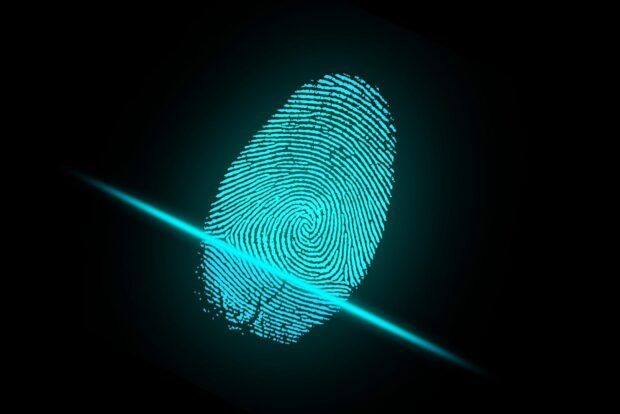
Why are governments developing digital IDs?
Governments around the globe are increasingly focused on the benefits of developing digital identify systems. The systems are viewed as ways to create secure online means for citizens to access government services as provision is increasingly moved online.
However, moving government services online requires two capabilities: departments must be able to share and match data on individuals, addressing any discrepancies between their datasets; and citizens need a single, secure, online access point.
What is a digital ID?
Recent research by Global Government Forum interviewed seven senior national figures to find out what digital leaders need to succeed.
It highlighted the need for a single citizen digital identity system, built around either a ‘unique identifier’ – such as the reference numbers lying at the core of many national ID systems – or a ‘golden record’: a ‘single source of truth’ held by a designated civil service body.
In one case study example, the Estonian government has used its pre-existing national digital identity system to form the basis of a digital identity system.
In other countries, they are building systems from scratch. The United Kingdom has recently embarked on a programme to develop a digital ID, while eight countries have drafted a set of high-level principles to support the development of mutually recognised and interoperable digital ID systems and infrastructure.
The Digital Government Exchange (DGX) Digital Identity Working Group said that collaboration on digital ID could help “facilitate economic recovery from COVID-19, for example to support the opening of domestic and international borders”.
The 11 principles call for digital ID infrastructure to be open; transparent; reusable; user-centric; inclusive and accessible; multilingual; secure and private; technologically neutral and compatible with data portability; administratively simple; able to preserve information; and effective and efficient.
Upcoming event: Digital ID workshop
How are governments developing digital IDs in the UK, Germany, France, United States, Canada, Australia and New Zealand?
Countries are taking different approaches to this issue. The UK’s One Login programme, which will allow users to create a government account to access services online, or through an app.
The programme represents a shift in the government’s approach. Its previous effort was known as GOV.UK Verify, a web platform that allowed people to register to prove their identity with the proof then accepted by government departments and agencies to access services. The system was intended to provide assurance for people to register for services such as benefits, but suffered from low take-up.
Outside of Estonia, different European nations are also at different stages of development. The German government’s Digital Identities programme now allows German citizens will be able to save their electronic proof of identity from their German ID card directly onto their smartphone and use that electronic ID function via their smartphones. The French Government’s The French government agency, Agence Nationale des Titres Sécurisés (National Agency for Secure Documents) has selected digital ID firm IDEMIA to work on its national digital ID programme, France Identité Numérique.
National plans in European countries will also dock into the European Commission’s digital identity framework for citizens, with the German government stating that “our goal is to use interoperable ID solutions of the EU member states to establish a European alternative to non-European private ID services”.
Elsewhere, the Government of Canada’s government digital strategy, which includes a continued effort to introduce secure digital identities for citizens, while the US federal government has a programme for a real time digital ID verification service.
In Australia, the government has already established a digital identify system, with legislation published to expand the existing process “to a whole-of-economy solution so that all levels of government and private sector – especially small and medium businesses – can participate and share in the efficiencies and benefits that Digital Identity will bring for them and the community”.
Development of a digital identity system is a key foundation outlined in the New Zealand government’s Strategy for a Digital Public Service, with legislation planned to create a digital services trust framework after investment in the system was approved by ministers in June 2021.
DGX’s Digital Identity Working Group report highlighted that although its member countries’ existing policies were specific to their respective government’s requirements around digital identity, all were broadly aligned to ISO standards, EU standards or industry best practice.
“Across most member countries, trust frameworks, policy and legislation have been developed with future mutual recognition and interoperability in mind, opening up the broad opportunity to achieve interoperability between the digital identity systems and infrastructure,” it said.
Read GGF’s latest articles on the development of digital identity schemes by governments
Digital identity: what the UK government needs to get right in One Login programme
Pakistan to launch digital ID wallet this year
Eight countries set out principles for the future of digital ID
Asking the experts: What do digital leaders need to succeed?
Births, deaths and everything in between: designing services around peoples’ lives
Posted by: Margaret H. Graves, DHS Acting Chief Information Officer
The Department of Homeland Security (DHS), as part of the Administration’s Digital Government Strategy, has reached key agency milestones to enable a more efficient and coordinated digital service delivery.
DHS has launched new mobile-enabled websites and Open Data Application Programming Interfaces (APIs), making our data easier to find and more accessible, allowing us to better serve the needs of the American public and help fuel entrepreneurship. To this end:
- TSA launched a mobile-enabled version of its Traveler Redress Inquiry Program (TRIP) website (https://trip.dhs.gov/), allowing travelers to submit and track Traveler Redress inquiries and complaints while on the go.
- U.S. Customs and Border Protection released the Border Wait Times mobile-enabled website (http://apps.cbp.gov/bwt/mobile.asp), which informs travelers of wait times at our nation’s border crossings and ports of entry.
- FEMA has released an API providing geospatially-enabled hurricane evacuation route data (http://gis.fema.gov/REST/services/FEMA/EvacRoutes/MapServer) that can be leveraged by developers in their own apps and web pages.
- The National Terrorism Advisory System (NTAS) API (www.dhs.gov/ntas-api-documentation) provides a feed of National Terrorism Advisory System current alerts that can be used by developers to place this information in their own apps and web pages.
DHS has also launched www.dhs.gov/developer which allows the public and software developers easier access to DHS-maintained open data APIs, web services, mobile apps, mobile-enabled sites, and developers forums.
The Digital Government Strategy will align public government services with 21st century capabilities. DHS is committed to enabling better utilization of departmental data to improve the quality of services to the American people, as we strengthen the delivery of our digital services.
You can learn more about DHS’ implementation of the Digital Government Strategy by visiting DHS’ Digital Strategy site (www.dhs.gov/dhs-digital-strategy).
spacer
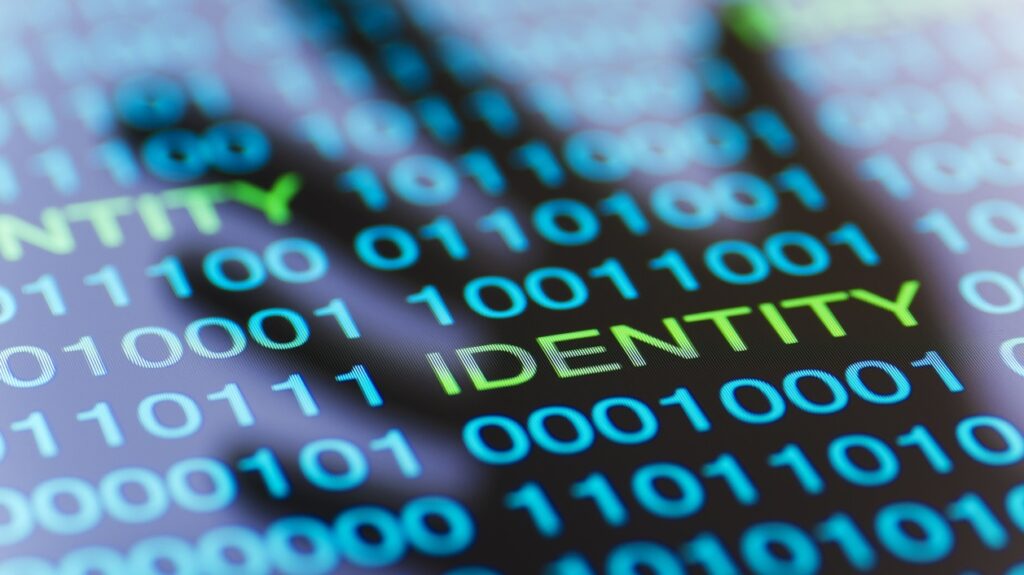
The U.S. Senate Homeland Security and Governmental Affairs Committee has voted to advance the Improving Digital Identity Act, moving one step further toward legislation that lays the foundation for a national Digital ID system for American citizens, according to MeriTalk.
Now headed to the Senate floor for full consideration, the bill aims to establish a public-private digital identity task force, charged with strengthening privacy and digital ID verification methods across U.S. government agencies.
The Act passed the House Committee on Oversight and Reform in July.
The bipartisan bill, which is sponsored by Arizona Senator Kyrsten Sinema and Wyoming Senator Cynthia Lummis, also enables the Department of Homeland Security to award grants for upgrades to digital identity verification systems. State, local, territorial and tribal governments will be eligible to receive support for the development of highly secure, interoperable ID systems.
Finally, the Improving Digital Identity Act would require the Government Accountability Office to report to Congress with estimated cost savings from the wide use of digital identification and biometric technologies.
A national digital ID system is seen as a potential driver of economic activity, by offering security solutions for online transactions, and as a way to combat the rise in identity fraud. For some, said system also comes with privacy concerns. However, the bill prohibits the government from creating a centralized ID database, to minimize the risk of cybercrime and major data breaches. (However, it does not prohibit our database from being tied into the already existing GLOBAL database.)
The U.S. holds mid-term elections on November 8, 2022, which are widely expected to result in a divided Congress.
spacer
Microchip vs. tattoo – What should you use?

Is an intramuscular injection more painful than receiving a tattoo?
No. An IM injection is done almost instantly.
A tattoo can take several sessions of several hours to complete.
spacer
Mar 4, 2022
- An invasive microchip tattoo was designed specifically to facilitate enforcement of children’s vaccination. It was developed at the personal request of Bill Gates. Ultimately, such tattoos will facilitate enforcement of vaccination dictates
Those with a major financial stake in medical products and services view patient “non-compliance” as a major stumbling block to the uninterrupted, steady flow of cash. Nowhere is compliance more intensely sought to ensure the steady flow of cash, than vaccines. Vaccine manufacturers want to monitor compliance with vaccination schedules that have been crafted to ensure highest utilization of new vaccines clusters. As a result, vaccines have become the profit engine for giant vaccine manufacturers.
- GlaxoSmithKline reported a 41% profit from vaccines in 2019, higher than profits from either drugs or over-the-counter health products.
This technology provides information that can be used to trigger police enforcement of state-mandated vaccination.
Katherine Wu, reporting in the Smithsonian Magazine wrote:
“The tattoo-esque technology, described today in the journal Science Translational Medicine, is still in the early stages of development, and hasn’t yet been tested in humans. But the team’s experiments in rats suggest that these medical marks are both safe and long-lasting, and can be administered alongside vaccines without compromising efficacy.”
Wu goes on to report that “though somewhat comparable to tattoos, the marks are delivered by a microneedle patch—a four-by-four grid of tiny, 1.5-millimeter-long spikes made up of nanoparticles that are undetectable in visible light, glowing only when viewed in infrared. Within two minutes, the nanoparticles diffuse into a layer of the skin”.
The study author, Kevin McHugh, a bioengineer at Rice University said “The goal is widespread adoption.”
 A schematic showing how a new product could encode a person’s vaccination history without the need for medical records. A microneedle patch delivers fluorescent nanoparticles beneath the skin, leaving a pattern that can be visualized with a smartphone that can detect infrared light. (Courtesy of Kevin McHugh, Rice University)
A schematic showing how a new product could encode a person’s vaccination history without the need for medical records. A microneedle patch delivers fluorescent nanoparticles beneath the skin, leaving a pattern that can be visualized with a smartphone that can detect infrared light. (Courtesy of Kevin McHugh, Rice University)
It turns out that this technology is not exactly new. A variant of the latest micro-tattoo has been in use in hospitals since, at least, 2011. Researchers Develop Electronic ‘Tattoo‘ which they called an epidermal electronic system (EES)
TECHNOCRACY III: TAGGED (AND BAGGED?)
“The lessons learned from the adoption of other technologies suggest that radio frequency identification will be more important than anyone currently imagines.”
– Mark Roberti, founder and editor of RFID Journal
As American infrastructure crumbles under the weight of trillions of dollars of debt accumulated from largely illegal and spurious wars abroad, automation is biting further into the human labour market. Parallel advances in data-collection, surveillance and monitoring continue to build a “soft” police state, all of which must be paid for. New ways of fleecing the populace must be found which means we will be seeing more examples of SMART applications roll-out across a broad range of societal domains. (This need for funding is also the reason for all the Phony Philanthropy and Charitable Organizations begging for donations every day on TV.)
Hot on the heels of issuing digital licence plates in California, a little black box has made an appearance that will fit neatly by the dashboard of your car. An October 2013 Los Angeles Times report: ‘A black box in your car? Some see a source of tax revenue’ Evan Halper tell us: “The devices, which track every mile a motorist drives and transmit that information to bureaucrats, are at the center of a controversial attempt in Washington and state planning offices to overhaul the outdated system for funding America’s major roads.” The idea is to extract more money out of the hapless US citizen by allowing the government to keep track of the miles they drive in order to draw up yet another tax bill.
No doubt when this is integrated into “the internet of things” then every little iota of information about where you go and what you spend your money and who you decide to see will be factored in to the bill with increases, decreases and penalties and pluses accordingly. This initiative has its blessing from libertarians and lobbying from environmental groups. The former has a SMART techtopia informing its idealism while the latter sees Agenda 21 and sustainable development as the medium by which their own complimentary ecotopia can manifest. Despite protestations from the American Civil Liberties Union, both camps are blind to the undercurrents of Pathocracy in this context.
Keen to do its part for the SMART revolution the European Union has proposed a scheme which would see cars fitted with camera systems that ‘read’ the limits displayed on road signs and automatically apply the brakes. Supposedly in a bid to cut the number of deaths in car accidents the scheme labelled ‘Intelligent Speed Adaptation’ would use GPS satellites to transmit data to automatically limit the driver’s speed along with verbal computer commands to slow down. Or, according to The Telegraph’s September 2013 report: ‘EU plans to fit all cars with speed limiters,’ drivers can be given “… a warning of the speed limit, or their speed could be controlled automatically under the new measures.” [1]
The merging of SMART society and surveillance already has a formidable momentum in America. These examples are the tip of an emerging philosophy of data collection and surveillance which is making inroads into every facet of our once relatively free existence. For instance, just in case you were in any doubt that vaccinations are always a gift from God, registry systems have been set up to track your vaccination status so that you can continue to do as you’re told. Or perhaps you’ve come across the biometrics programs currently being tinkered with in US schools which will “… track students’ eye movements, monitor their conversations or even measure their smiles.” Turning the classroom into a tech-lab paradise of attentive drones is easy – and profitable. In the same month, online journal The Future Is Now ran an article entitled: ‘Biometrics Help Teachers Track Students’ Every Move.’ Sheila Dharmarajan writes: “When the student is looking up at the teacher, the teacher score goes up. If she looks down at the computer, the computer score goes up. So we’re tracking facial expressions. If she makes a smile, it might be indicative that is enthusiastic about the topic.” [2]
Ah, the simple world of binary perception …
But it isn’t only in the US. While the UK’s ID scheme has been temporarily jettisoned, other countries are pushing ahead. Journalist Katitza Rodriguez, writing for the Electronic Frontier Foundation on January 10, 2012 highlighted Argentina’s resurrected and mandatory National Registry of Persons (RENAPER) which had lain dormant from the era of military dictatorship. Facial recognition and finger-printing are part of a security-surveillance system which is about to be integrated into the Federal System of Biometric Identification (SIBIOS) used by existing police and military networks. The registration of new-born babies’ biometric information has taken place since 2012 with projections that the SIBOS database will reach over 40 million within the next two years.
In January 2012, all 1.2 billion residents of India were the lucky beneficiaries of a nationwide program overseeing the allocation of a Unique Identification Number (UID). Each number will be fixed to the biometric data of the recipient utilizing using three different modes of information detection: fingerprints, iris scans, and face recognition. The implementation of RFID (radio-frequency identification) is the next stage for India’s flourishing biometric industry.
RFID stands for “Radio Frequency Identification”. With the advent of Wi-Fi and SMART applications the platform for RFID is expanding to include SMART labels for consumer products, assest tracking, secuirity and data retrieval for business. Then we have the more invasive tagging with computer chips implanted into physical objects, animals, livestock and human beings. The Electronic Product Code that lies within the chip can be “read” when the device emits a radio signal. The chips contain electronically stored information which can be read up to several meters away. Active tags are self-powered and have a long range, particularly useful for surveillance. Passive tags are without battery source and use a local power source, the range being variable.
Some Christians have long been frothing at the mouth at the prospect of micro-chipping and what they consider to be the proverbial “Mark of the Beast” from The Book of Revelations, without which: “no man might buy or sell save he that had the Mark.” To be fair, it does sound remarkably similar. The Association for Automatic Identification and Mobility (AIM) sees biometric identification in true technocratic form where federal, state, local governments, military and commercial applications should join together and embrace the SMART culture without a care in the world. According to AIM, the RFID-chipped “SMART cards” and the biometric revolution “are set to pervade nearly all aspects of the economy and our daily lives.” [3]
The selling pitch goes like this: The tagging of products from razor blades to underwear represents enormous benefits to consumers, protecting us against fraud and theft as well as providing cost reduction and convenience. What could be simpler? And because it is so simple and so convenient given the fast-paced nature of our modern society, doesn’t it make sense to get yourself tagged too? Efficiency, efficiency and more efficiency …
As a precursor to this we have contactless technology being pushed by companies such as Google, with the majority of mobile network companies getting in on the act because data – your data – is king. Disney’s electronic “MagicBand” illustrates why. In the summer of 2013, the Disney corporation announced the use of an electronic wristband for all visitors to its theme parks. First introduced at Disney World in Florida it can be used at rides, hotel doors, stores and allow Disney staff to greet you using your first name. Who needs a wallet when everything is done for you? The downside to this of course, is a marketing coup d’état where Disney will be able to track what you purchased, which stores you visited, which rides you enjoyed and when, at which hotel you stayed and a vast collection of data to provide valuable insights into social psychology of visitors.
So, what’s a little data between friends and theme parks? Quite a lot actually.
RFID Tracking bracelets for amusement parks, hospitals and children’s playgrounds. It’s all good clean fun kids!
If you really want to take technology to the heights of efficiency in order to go about your business without a care in the world then your very heart might offer the ultimate hub for hands-free, contactless connection to the New Synthetic World. Canadian biometric company Bionym introduced us to the unnerving offer that: ”Your pulse could be your new Password.” Indeed, every number and code that you currently use to live your life could be distant memory if people such as Bionym chief executive officer Karl Martin has his way. “Pulse passwords” could be the new ultra-convenience. [4]
The heart has unique characteristics relating to size, position and physiology so those clever bods at Bionym have developed a wristband which recognises the pattern of an individual pulse. The transmission of information allows the user to carry out all the usual transactions and internet-based activities which require a password. And it also pleases those worried about security as heartbeats cannot be replicated. Furthermore, as every heartbeat is unique, should the wristband become lost or stolen, it would not function for another user. And on the market in 2014 at $100 many will see the benefits of such an appendage.
Tattoos used to be a tribal marking of religious or sacred significance. In Western culture gangs, dockers and truckers were some of the groups who took to marking themselves to tell their peers who they were and what they’d been through.
(I wonder why they did not mention that tattoos were made popular by SAILORS, they largest group that still marks themselves with Tattoos that show their covenant with the gods of the sea. All sailors who cross major lines must swear their allegiance and go through initiation to this day! see my series: Are you having a Mari-Time)
Now, tattoos are big business and a fashion statement for the young. As luck would have it, electronic tattoos are now appearing from telecommunications companies like Motorola who are working on a version that contains a computer chip and an antenna. Just to give us an idea what to expect in the new future to complement these tattoos there is also: “A pill that dissolves and turns the entire body into a transmitter …” If they can be used to replace all those dozens of pesky passwords then there is money to be made and an interaction with the internet of things (IOT).
We will not need to identify ourselves because we will be integrated into the system.
As discussed previously, Mike Orcutt’s March 2013 article for MIT Technology Review explored John Roger’s work as a materials scientist at the University of Illinois at Urbana-Champaign. He is one of those experimenting with “epidermal electronics” where applications can be printed directly onto the skin. Rogers tells us that these new devices will be very useful to the medical industry and explains: “You can use a rubber stamp to just deliver the ultrathin mesh electronics directly to the surface of the skin.” And by using “spray-on bandage” products a thin protective layer acts to “… bond the system to the skin in a ‘very robust way.’”
 Back in November 2003, The Privacy Rights Clearinghouse – a non-profit, grant-supported advocacy and consultancy organisation for consumer awareness – had already produced the “Position Statement on the Use of RFID on Consumer Products.” In the study, they concluded the following:
Back in November 2003, The Privacy Rights Clearinghouse – a non-profit, grant-supported advocacy and consultancy organisation for consumer awareness – had already produced the “Position Statement on the Use of RFID on Consumer Products.” In the study, they concluded the following:
- Hidden placement of tags. RFID tags can be embedded into/onto objects and documents without the knowledge of the individual who obtains those items. As radio waves travel easily and silently through fabric, plastic, and other materials, it is possible to read RFID tags sewn into clothing or affixed to objects contained in purses, shopping bags, suitcases, and more.
- Unique identifiers for all objects worldwide. The Electronic Product Code potentially enables every object on earth to have its own unique ID. The use of unique ID numbers could lead to the creation of a global item registration system in which every physical object is identified and linked to its purchaser or owner at the point of sale or transfer.
- Massive data aggregation. RFID deployment requires the creation of massive databases containing unique tag data. These records could be linked with personal identifying data, especially as computer memory and processing capacities expand.
- Hidden readers. Tags can be read from a distance, not restricted to line of sight, by readers that can be incorporated invisibly into nearly any environment where human beings or items congregate. RFID readers have already been experimentally embedded into floor tiles, woven into carpeting and floor mats, hidden in doorways, and seamlessly incorporated into retail shelving and counters, making it virtually impossible for a consumer to know when or if he or she was being “scanned.”
- Individual tracking and profiling. If personal identity were linked with unique RFID tag numbers, individuals could be profiled and tracked without their knowledge or consent. For example, a tag embedded in a shoe could serve as a de facto identifier for the person wearing it. Even if item-level information remains generic, identifying items people wear or carry could associate them with, for example, particular events like political rallies. [5]
Not that these warnings have made a whole lot of difference to the momentum of such technology.
American and European governments’ expenditure of billions of taxpayer’s money on creating these new systems “for our protection” is unjustified for a multitude of reasons. One of these shows how particularly ridiculous the whole scenario really is. If someone wishes to read the biometric information from our passport, driving licence or ID card they need only to purchase a reader device and scan the information without the individual ever knowing. Of course, the government and their spooks have been extracting information in a similar fashion from so called “secure” systems of information for decades. As outsourcing of the state to private companies is becomes the norm, it is hardly likely that governments could stem the tide of information theft should they even want to.
In February 2007, the electronics corporation Hitachi proudly revealed the development and successful testing of the world’s smallest and thinnest class of “non-contact RFID Powder IC (integrated circuit) Chip.” It measures just 0.05 x 0.05 millimetres, which is about the size of a pin-head or less. We read on their website in a Research & Development report that their aim is: “… to embed the chip in thin paper, a practice that is already in general use,” informing us that: “These technologies are expected to be seen in a wider range of applications.” [6]
In 2015 this became a reality. The chips have a 128-bit ROM for storing a unique 38 digit number and can indeed be worked into any product at all. Since these chips are “already in use” it begs the question: what other applications are they thinking about? The military surveillance uses are well ahead of the consumer game. As one writer on the chips mused: “… suppose you participated in some sort of protest or other organized activity. If police agencies sprinkled these tags around, every individual could be tracked and later identified at leisure, with powerful enough tag scanners.” [7]
This echoes trans-national corporation IBM and their business relationship with Nazi Germany’s Third Reich in the 1930s and their subsequent collaboration during World War II. Investigative journalist and author Edwin Black explained how IBM’s technology helped facilitate Nazi genocide against Jews and other undesirables through the creation and tabulation of punch cards based upon national census data. Aside from administrative and logistical support, IBM machines were used in concentration camps. Many prisoners had their details passed through the Labour Assignment Office and assigned a characteristic five-digit IBM Hollerith machine number, 44673. This five-digit number in the punch card system was designed to track prisoners in the camps, most notably the slave labour camp at Auschwitz. The number was the precursor to the numerical tattoo stamped upon the arm of an individual and deemed more cost-effective and efficient.
IBM Hollerith Card Processing Machine used by the Nazis circa 1940s
There is no doubt that the targeted identification of Jews and other racial groupings for: “… asset confiscation, ghettoisation, deportation, and ultimately extermination” took place in a way that is logistically and insanely ambitious. The Nazis were able to kill as many as they did with the help of IBM’s pioneering computer work which required: “… generations of communal, church, and governmental records all across Germany—and later throughout Europe—[to be cross-indexed] a task so monumental, it called for a computer. But in 1933, no computer existed.” [8] That’s where IBM came in. And its legacy for number crunching computation has remained, the profits of its participation in the logistical side of the holocaust having kept it afloat for all these years.
So, what has IBM been up to recently?
Harking back to their darker history, the corporation has finished patenting their “Identification and Tracking of Persons Using RFID-Tagged Items in Store Environments.” Security and Privacy analyst Katherine Albrecht, founder of the consumer pressure group CASPIAN (Consumers Against Supermarket Privacy Invasion and Numbering) writes about RFID’s potential for surveillance: “… where networked RFID readers called ‘person tracking units’ would be incorporated virtually everywhere people go – in “shopping malls, airports, train stations, bus stations, elevators, trains, airplanes, restrooms, sports arenas, libraries, theaters, museums, to closely monitor people’s movements.”
You can already see the acclimatisation taking place with i-phone apps scanning capabilities in billboard ads in bus shelters and shopping malls. When RFID tag scanners are located in the required locations, they scan the RIFID tags on a person. Albrecht continues: “As that person moves around the store, different RFID tag scanners located throughout the store can pick up radio signals from the RFID tags carried on that person and the movement of that person is tracked based on these detections … The person tracking unit may keep records of different locations where the person has visited, as well as the visitation times.” What is more, if personal data does not register on the tag, no problem, IBM tells us: “the personal information will be obtained when the person uses his or her credit card, bank card, shopper card or the like.” [9] Which means a person’s unique RFID number and his or her identity will merge into the overall techno-identity of our SMART society.
Although slower than the technocrats would like, the implantation of RFID’s in the global population is making progress. Alongside marketing tattoos a much vaunted fashion statement, another method of gradualism was to implant pets and farmyard animals as part of an agribusiness efficiency and as a prelude to human implantation.
In January 2007 Business Week reported on the Federal mandated National Animal Identification System (NAIS) and their desire to digitally tag “… 40 million farm animals to enable regulators to track and respond quickly to disease, bioterrorism, and other calamities.” The report rightly highlights the fears of the more informed which it summarises thusly: “You test it on the animals first, demonstrating the viability of the radio frequency identification devices (RFIDs) to monitor each and every animal’s movements and health history from birth to death, and then move on to people.” The report mentions the ambitions of one Scott Silverman who runs a: “… company that sells the rice-size people chips, which are the only ones with Food & Drug Administration (FDA) approval, for implantation in an individual’s right biceps. They carry an identity marker that would be linked to medical records. His goal is to create ‘the first RFID company for people.’” [10] More from Mr. Silverman presently.
Things have progressed since 2007 and we can now see implementation of Bluetooth, Wi-Fi and RFID chips in a fusion of agribusiness and SMART technology called by French technocrats as “SMART Agrimatics”. A paper hot of the press at the time of writing is about as innovative as you are going to get on the subject of agribusiness and technocracy. The culmination of a pilot project research, it involves the application and use of RFID tags for “ruminants” (cows, sheep and goats to you and me) the studies of which were conducted between 2005 and 2010. This includes discussions on the relevant use of RFID; use of RFID for feeding automates on farm; use of RFID for performances control; use of RFID for animal trade; use of RFID for slaughter chain and supervision for RFID devices.
The paper reads like a machine mind designing for another machine mind, except there are – inconveniently it seems – sentient beings involved. For the farmer scratching his head as to whether he is a human being raising animals or an engineer maintaining “automated consumption units” and keen to make the leap to SMART-Agrimatics, then obviously this dossier would be invaluable for setting his mind straight – one way or another.
With “ear-tag and detection cell” and “fixed readers integrated in the environment” agri-business and GM technology are well placed to maximize their efficiency ratios. Once all cattle have been tagged logged and every aspect of their cellular structure analysed then the collection and transfer of said data can be uploaded to the national database “… the weight linked to the official animal identification number from RFID reading.” [11] Driven by economic incentives and inventory control, larger farms all over Europe and the US are signing on to RFID.
Now, how would that play out for humans?
If we were learn from automated factory farming and now SMART-Agrimatics, the key term here, once again, is efficiency.
How does one maximize the efficiency in automated methods of keeping an awakening population asleep to a minority of psychopaths? The technocratic, sensual and pharmaceutical amusements of Huxley’s Brave New World should give you some idea. The following picture from the above report might easily apply to the “sheep” in the human population who believe in the authoritarian structures they have grown up with. Wolves come in many disguises.
“The Future Sheeple?”
Over in the UK, after a series of well reported dangerous dog attacks new legislation has gone ahead that forces dog owners to pay between £20 – £30 to have a RFID chip injected under the skin of their pooch while still a puppy. As one animal welfare spokesman mentioned: “It’s not so much the dogs that should be targeted, but the owners who train them to be vicious.” (A metaphor for psychopaths and their societies perhaps?) Implantation of RFIDs has predominantly taken place within security firms, the military and various dance clubs in European countries whose clientele find it convenient to speed their entry. These are the voluntary lab-rats.
The Verichip Corporation and their various subsidiaries has been one of the leaders in RFID technology with their flagship product the Verichip ™ manufactured by Digital Angel. PositiveID, a developer of medical technologies for diabetes management, clinical diagnostics and bio-threat detection is the company that uses its patented VeriPay system where the chip can be used like a credit card to authorise financial transactions. It is currently being used by the Baja Beach Club in Spain to the delight of many happy party goers.
The Verichip was initially foreseen as a device for retrieving medical records, having received FDA approval for medical use in 2004. But the vision was never designed to stop there. The size of a grain of rice it is easily implanted just under the skin in the arm or hand so that the device can monitor human biometric functions and transmit the data with GPS technology. Thousands of Mexicans have since been implanted, from law enforcement workers to ordinary citizens. The latter are doing so in increasing numbers due to a 317 per cent rise in kidnappings, 20 per cent of which has involved corrupt police officers. Many US companies are dubious that the chips actually work in combination with GPS devices but payments of up $2000 are being handed over nonetheless. One slight wrinkle in the chip means that confirmation of identity can only be confirmed when the body has been found. [12]
Currently in talks with the Pentagon to implant Verichip into all 1.4 million US soldiers, PositiveID has also been delighted to receive bulk orders from the Israeli military not wishing to be left out of technocratic party. Marc Poulshock, PositiveID’s Vice President of Business Development, said: “We believe there are many important applications for the VeriChip and our associated intellectual property including next-generation identification and bio-sensing capabilities. Our partner is looking to help healthcare organizations, militaries including the IDF, and governments with their disaster preparedness and emergency response needs.” [13]
VeriCorp insists that the Verichip is very difficult to steal despite two hackers showing just how easy it really was to steal a person’s identity via the RFID. Annalee Newitz and Jonathan Westhues gave a special demonstration at the HOPE Number Six conference in New York City in July 2008. Newitz had the VeriChip RFID implanted in her right arm. Westhues then proceeded to clone the chip by reading Newitz’s arm with an RFID reader, scanning it with a homemade antenna connected to his laptop which recorded the signal from the chip. Finally, he used the same RFID reader to obtain the signal from his laptop, which then gave Newitz’s “unique” ID. Verichip had no comment to make other than they had been too busy to look at their evidence.
That hasn’t prevented the idea that new-borns should be protected from nefarious activities of the public. Ronald Kane, Vice President of CUBIC Corp., a major manufacturer of implantable chips, while discussing the profit margins on RFID tags enthusiastically stated: “If we had our way, we’d implant a chip behind everyone’s ear in the maternity ward.” [14]
According to RFID News Student ID cards equipped with RFID chips are becoming more common sight on schools and college campuses. Education officials are “… adopting RFID technology to track everything from student attendance to valuable assets.” [15]It is part of a wide-ranging rollout of SMART technology including Iris recognition software and cameras which monitor the emotional states of students, both of which have caused considerable controversy, not least at the idea of turning schools into virtual prisons.
A similar efficiency-ratio mentality is being employed in business training software offered by online technology company Mindflash. FocusAssist is a new feature designed for i-Pad which tracks the user’s eye movements via the tablet’s on-board camera. When you’ve looked away for several seconds the course is paused. This apparently forces you to pay attention so that you can finish the assignment. One wonders how long it will be before computers are teaching children and adopting a similar attention mechanism.
The contradictions and double-speak that are on display from the Verichip advocates is quite a show. The US Food and Drug Administration (FDA) gave a 2002 ruling that that: “VeriChip is not a regulated device with regard to its security, financial, personal identification/safety applications … VeriChip’s healthcare information applications are subject to regulation by the FDA in the United States.’ As author and journalist Uri Dowbenko mentions: “It’s OK if the VeriChip tracks your credit report history, but not OK if it’s used to inform doctors you’re diabetic? This will undoubtedly be used as an argument to justify the VeriChip as a so-called ‘medical device’ in the future.” [16]
The stages which the RFID tags have followed have moved through: pets = cattle = criminals = military = business workers towards the longer more drawn out process of finally chipping the mass population. Biometric passports, national ID cards and then gracefully having your palm over the supermarket scanner will make things so easy! So easy in fact, that perception management will tell you the next logical step in this New World of SMART design is to be “SMART” yourself and integrate your body into the system, and then you will be “free.” Notwithstanding the potency of such an illusion, there is another problem. Verichip and other companies love to tell us about the medical and community benefits of tagging which include the monitoring of heart troubles, children safety, pet protection and the like, what of the health issues related to RFID tags?
In 2007 the Verichip Corporation and other related companies were dealt a severe blow to their credibility when Katherine Albrecht’s CASPIAN consumer pressure group released a 48-page paper entitled “Microchip-Induced Tumors in Laboratory Rodents and Dogs: A Review of the Literature 1990–2006”. Based on a dense review of academic research on the subject, the causal link between implanted radio-frequency (RFID) microchip transponders and cancer in laboratory rodents and dogs could not be clearer. Dr. Robert Benezra, head of the Cancer Biology Genetics Program at the Memorial Sloan-Kettering Cancer Centre in New York, said: “There’s no way in the world, having read this information, that I would have one of those chips implanted in my skin, or in one of my family members.” Given the preliminary animal data it looks to me that there is definitely cause for concern.” [17]
CEO and Chairman of Verichip Corporation Scott R. Silverman played his part in a disinformation campaign launched by RFID companies in response to the findings. Silverman is quoted in a Time article as saying that in the “… second study, conducted in France in 2006, two years after VeriChip’s FDA application was approved, found that while 4 per cent of the 1,260 mice in the study developed tumors, none of them were malignant.” [18]The truth is a little different. The tumours were indeed malignant sarcomas and most of the animals in question died prematurely as a result of the microchip-associated tumours. Destron Fearing, makers of the HomeAgain pet implant came in a close second when they ignored a finding of fibrosarcoma – a highly lethal cancer – as “benign” in a recent report. Katherine Albrecht stated: “Either VeriChip and the makers of HomeAgain actually don’t understand the difference between a benign fibroma and a malignant fibrosarcoma, or they’re deliberately lying to the public. Either way, it’s clear they can’t be trusted. We hope our new report will set the record straight.” [19]
Despite this, Silverman was correct in that overall, the incidences of cancer in dogs after over 10 million injections is relatively small, which means that this scare is not enough to put off either the medical establishment, security companies and the potential benefits to consumers in a variety of social situations.
This brings us back to the National Security State; the various World State advocates that would like to see the global population “culled” and the war on terror tool that has allowed a technocratic Police State infrastructure to rise up virtually unopposed. When SMART, surveillance society arrives on the back of a few more mini-911-type scenarios, there may come a stage where, if you want to eat, you must acquire a chip. It’s a logical step that once mass acceptance of RFID tagging has gradually taken place anyone that is deemed a “terrorist”, “subversive” or merely suspiciously expressing a “radical” opinion on Facebook can be easily tracked and controlled. (See Police State Amerika I: Facebook Thought Police). The next step from targeting dissidents is the expansion of powers to include a wide range of groups or organisations that come under the vague and nebulous definitions of terrorism. Everything that doesn’t fit into that SMART design will be well … switched off.
Technocracy is essential to the smooth running of the Elite-collectivist model and as we have seen so far in this series, the younger generations are the primary targets for social engineering. With a sizable marketing drive underway headed by the Verichip slogan: “Get chipped,” RFID tags are being marketed as chic and trendy, cool and desirable. If the recent surge in tattoos is anything to go by, the microchip might be the next fashion statement for those too young (or programmed) to have awareness of the implications.
Despite loud mutterings of discontent in the US and the European Union the advances in SMART tech will not be going away. Ideologically driven technology and enormous amounts of money to be made will mean that regulations are unlikely to be enforced. The health hazards of mobile phone use and GMOs are well known but we still use them because society itself is being redesigned to make life unlivable without them. It seems we are no longer human beings but living bar-codes programmed to proffer feedback loops of data in a vast auto-matrix of supply and demand. It should come as no surprise that corporations and their governments are seeking ways to extract more profits from the New Technological Order that is rising up from the shopping mall.
Swedish company creates a subcutaneous microchip with the COVID 19 Certificate – WebMediums
8 min read
In Europe and much of the world, the COVID-19-19 passport or COVID-19-19 certificate has begun to be implemented to carry out a myriad of public activities, or to travel from one country to another.
This certificate consists of the vaccination plan for which it is granted to people who have been fully vaccinated.
Likewise, it has become an essential requirement for all citizens, since basically without it, they will be very limited to carry out thousands of activities and even to buy food or medicine.
At first, everything seemed to indicate that vaccination was not mandatory, except in some countries where their rulers made it mandatory.
Despite this, there are many people who are against the vaccine and who as the day goes by are much more forced to have to be vaccinated to be able to enjoy simple activities.
This is how people have to be vaccinated with all the doses to be able to enter a restaurant, access a hospital if they want to accompany a relative, enter a supermarket or shoe store.
In the case of Europe, this certificate is already handled digitally, where people can take it from their mobile device with a QR code that can be scanned in any public place or place.
..the head of the DSruptive Subdermals company, Hannes Sjoblad, also wanted to express his opinion regarding the subcutaneous microchip that could be being implemented worldwide in the coming months.
“It is a microchip that will be implanted and has a value of about one hundred euros in the case of the more advanced versions, so it is very economical when compared to smartwatches or bracelets that cost twice as much. In addition, these Implants are going to last 30 or 40 years, while watches or bracelets for a long time last 3 years. ” (So they want us to pay for it!)
spacer




 The symbol “M” is actually that of Mountains which were called by the Ancients breasts. This is because a great deal of Material resources have always been located within mountainous formations. If you have ever seen a huge mountain and then wondered what is inside of it you are on to it already. Most mountains contains huge deposits of Gold Ore, Minerals, Crystals, Gems, etc. within them the only thing that remains is for it to be mined. You will see how being in the physical body or Mass is liken unto you being a Mountain and of course there are plenty of Beings running around trying to mine your mind.
The symbol “M” is actually that of Mountains which were called by the Ancients breasts. This is because a great deal of Material resources have always been located within mountainous formations. If you have ever seen a huge mountain and then wondered what is inside of it you are on to it already. Most mountains contains huge deposits of Gold Ore, Minerals, Crystals, Gems, etc. within them the only thing that remains is for it to be mined. You will see how being in the physical body or Mass is liken unto you being a Mountain and of course there are plenty of Beings running around trying to mine your mind.

 Is Monster Energy hiding a secret Satanic conspiracy?
Is Monster Energy hiding a secret Satanic conspiracy? There is something called the law of first beginnings, that is, where something originated. You’d be surprised how many things originate from the Bible. I believe that the number 13 originates with Nimrod at the tower and city of Babel, who was the thirteenth from Adam. Also, in Genesis 14:4, “Twelve years they served Chedorlaomer, and
There is something called the law of first beginnings, that is, where something originated. You’d be surprised how many things originate from the Bible. I believe that the number 13 originates with Nimrod at the tower and city of Babel, who was the thirteenth from Adam. Also, in Genesis 14:4, “Twelve years they served Chedorlaomer, and  Deuteronomy 13:13, “Certain men, the children of Belial, are gone out from among you, and have withdrawn the inhabitants of their city, saying, Let us go and serve other gods, which ye have not known.” The sons of Belial REBELLED in Deuteronomy 13:13. Coincidence? Nimrod, who led the building of the tower and city of Babel was the thirteenth from Adam. Judas Iscariot (13 letters).
Deuteronomy 13:13, “Certain men, the children of Belial, are gone out from among you, and have withdrawn the inhabitants of their city, saying, Let us go and serve other gods, which ye have not known.” The sons of Belial REBELLED in Deuteronomy 13:13. Coincidence? Nimrod, who led the building of the tower and city of Babel was the thirteenth from Adam. Judas Iscariot (13 letters). Mark 17:21-23 says that there are 13 evils in the human heart, “For from within, out of the heart of men, proceed evil thoughts, adulteries, fornications, murders, Thefts, covetousness, wickedness, deceit, lasciviousness, an evil eye, blasphemy, pride, foolishness: All these evil things come from within, and defile the man.”
Mark 17:21-23 says that there are 13 evils in the human heart, “For from within, out of the heart of men, proceed evil thoughts, adulteries, fornications, murders, Thefts, covetousness, wickedness, deceit, lasciviousness, an evil eye, blasphemy, pride, foolishness: All these evil things come from within, and defile the man.”
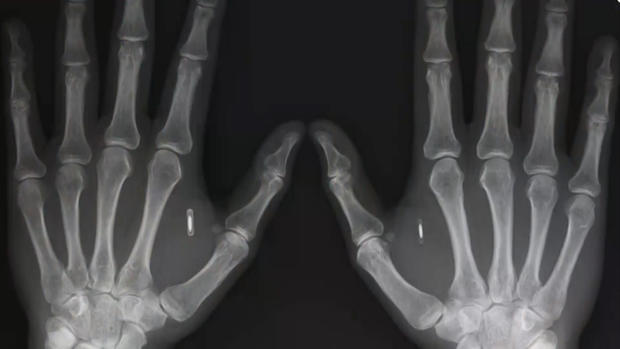

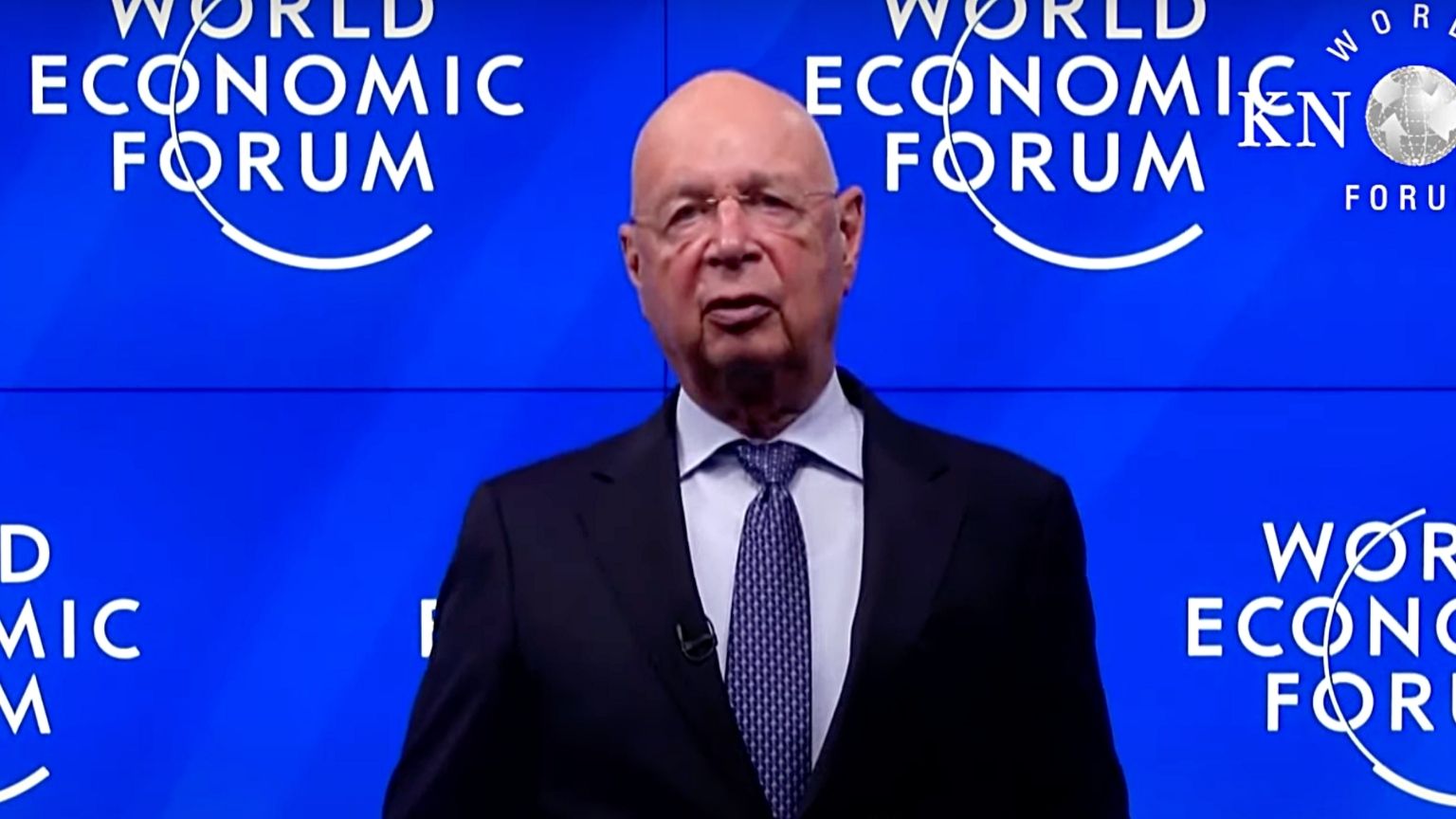
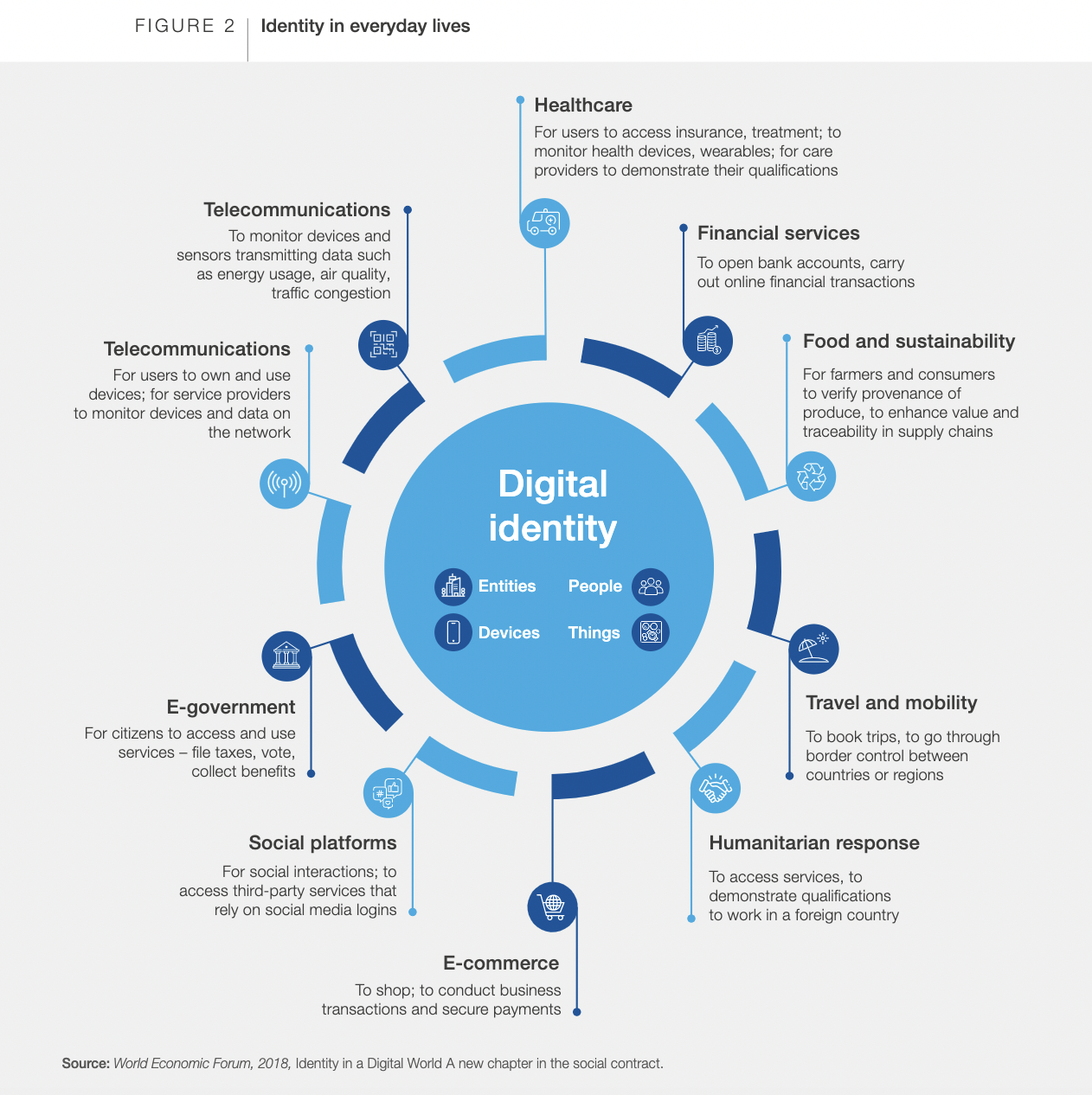
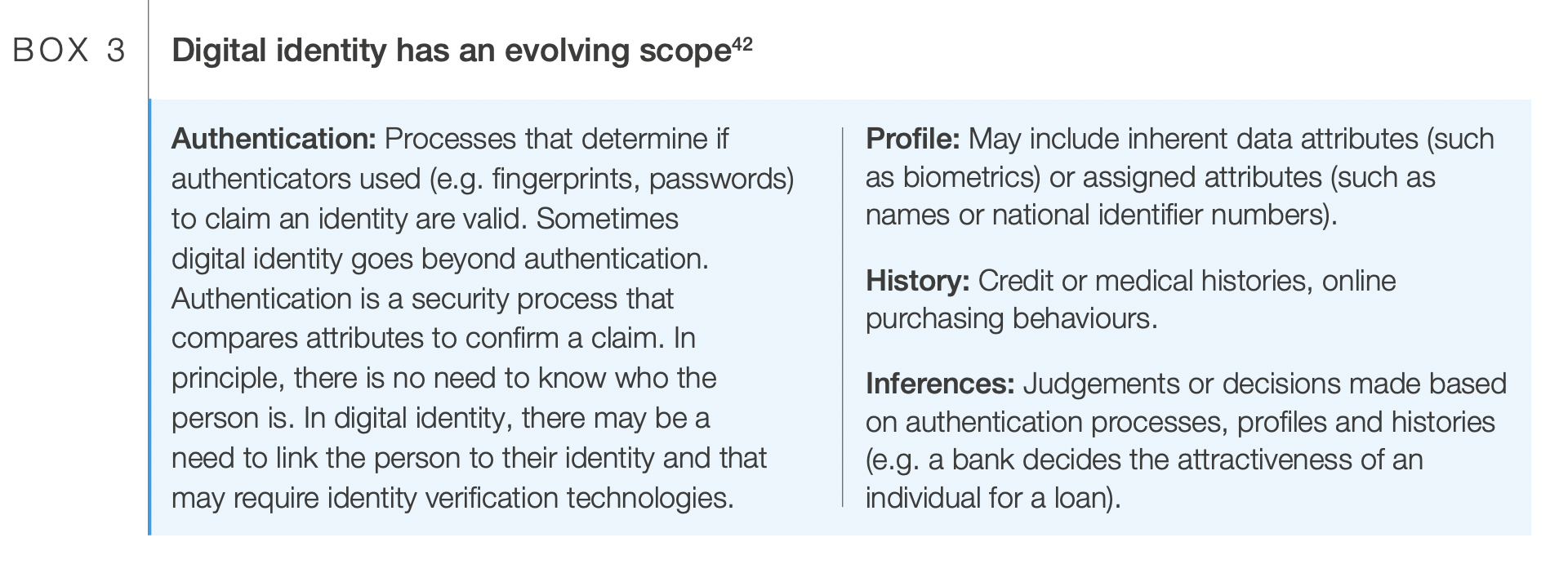









 “The Future Sheeple?”
“The Future Sheeple?”
